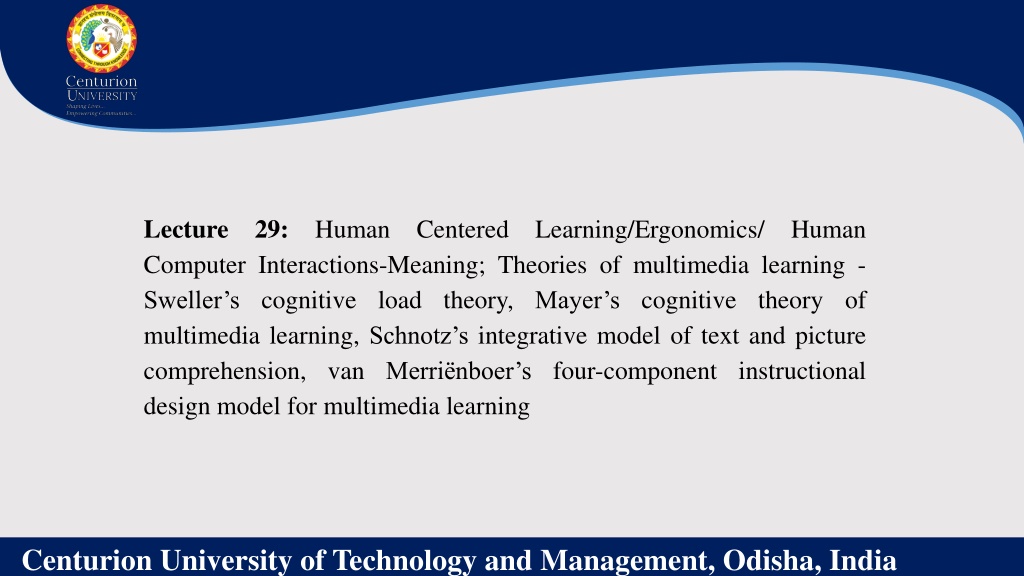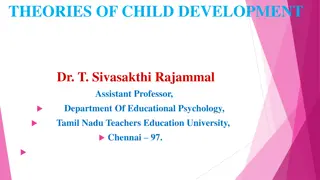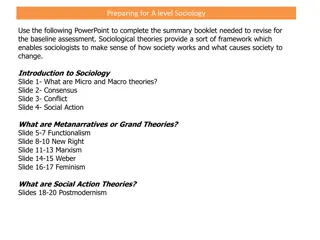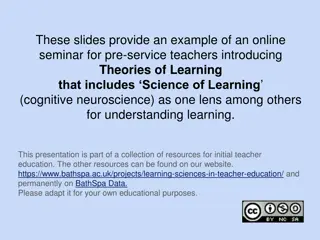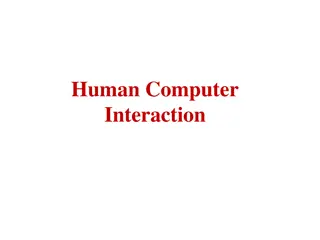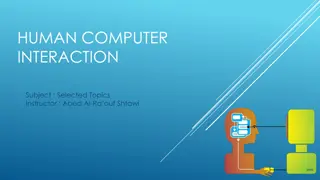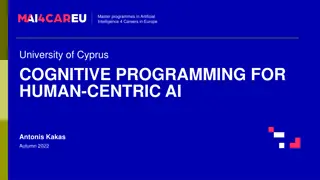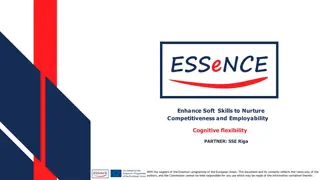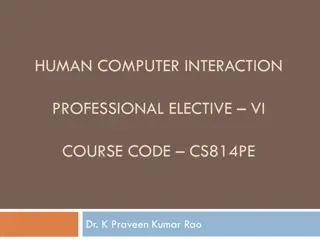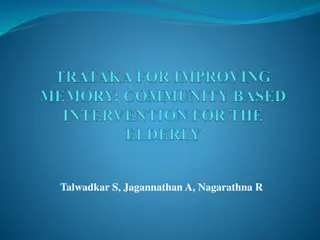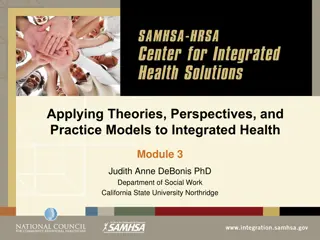Understanding Human-Computer Interaction and Cognitive Learning Theories
Human-Computer Interaction (HCI) focuses on how people interact with computers, while theories like Sweller's Cognitive Load Theory and Mayer's Cognitive Theory of Multimedia Learning explain how individuals process information. These theories emphasize optimizing learning by managing cognitive loads and presenting multimedia materials effectively.
- Human-Computer Interaction
- Cognitive Load Theory
- Multimedia Learning
- Cognitive Theory
- User Interface
Download Presentation

Please find below an Image/Link to download the presentation.
The content on the website is provided AS IS for your information and personal use only. It may not be sold, licensed, or shared on other websites without obtaining consent from the author. Download presentation by click this link. If you encounter any issues during the download, it is possible that the publisher has removed the file from their server.
E N D
Presentation Transcript
Lecture 29: Human Centered Learning/Ergonomics/ Human Computer Interactions-Meaning; Theories of multimedia learning - Sweller s cognitive load theory, Mayer s cognitive theory of multimedia learning, Schnotz s integrative model of text and picture comprehension, van Merri nboer s four-component instructional design model for multimedia learning Centurion University of Technology and Management, Odisha, India
Human-computer interaction (HCI) is the study of how people interact with computers and computer-based systems. MEANING: 1. It is a field of study within computer science and human-computer interaction that focuses on the design, evaluation, and implementation of interactive computing systems for human use. 2. HCI involves the design of the user interface, which is the way in which the user and the computer communicate with each other, as well as the study of how people use and react to different computer interfaces. 3. HCI is an interdisciplinary field that draws on theories and methods from computer science, psychology, sociology, and other disciplines to understand and improve the ways in which people interact with computers. Centurion University of Technology and Management, Odisha, India
SWELLERS COGNITVE LOAD THEORY Cognitive load theory is a theory of learning and instruction that was developed by cognitive psychologist John Sweller. The theory proposes that the human cognitive system has a limited capacity for processing and organizing information, and that this capacity can be overloaded if too much information is presented at once. According to cognitive load theory, there are three types of cognitive load that can affect learning: Intrinsic load: This is the inherent complexity of the material being learned. Extraneous load: This is the load imposed by the way in which the material is presented, such as the layout of text or the use of unnecessary graphics Germane load: This is the load associated with constructing and organizing new knowledge and skills. Cognitive load theory suggests that to optimize learning, the intrinsic and germane loads should be high, while the extraneous load should be low. This means that materials should be designed to focus on the essential content, and should be presented in a clear and organized manner to minimize distractions and unnecessary information Centurion University of Technology and Management, Odisha, India
MAYERS COGNITIVE THEORY OF MULTIMEDIA LEARNING Mayer's cognitive theory of multimedia learning is a theory that explains how people learn from multimedia materials such as videos, lectures, and interactive presentations. The theory is based on the idea that people learn best when they are presented with both visual and verbal information, rather than just one or the other. According to Mayer's theory, there are three key principles that influence how people learn from multimedia materials: The multimedia principle: This principle states that people learn more from multimedia materials (e.g., texts and graphics) when they are presented together, rather than separately. This is because the different types of information work together to create a more complete and engaging learning experience. The contiguity principle: This principle states that people learn better when the visual and verbal elements of a multimedia presentation are presented at the same time, rather than separately. This is because it helps to connect the two types of information and reduce cognitive overload. Centurion University of Technology and Management, Odisha, India
The personalization principle: This principle states that people learn better when the material is presented in a way that is tailored to their individual learning style and needs. For example, if someone is a visual learner, they may benefit more from a presentation with lots of graphics and charts, rather than a text-heavy presentation. Overall, Mayer's cognitive theory of multimedia learning suggests that people learn best when they are presented with both visual and verbal information that is presented in a way that is tailored to their individual learning style and needs. Centurion University of Technology and Management, Odisha, India
SCHNOTZS INTEGRATIVE MODEL OF TEXT AND PICTURE COMPREHENSIVE: Schnotz s Integrative Model of Text and Picture Comprehension is a theory that explains how people process and comprehend information presented in a multimedia format, such as a combination of text and graphics. According to the model, the process of comprehension involves three main stages Orientation: In this stage, the viewer tries to understand the context and purpose of the material, and identify the main ideas and supporting details. Integration: In this stage, the viewer combines the information from the text and graphics, and creates a mental representation of the material. Evaluation: In this stage, the viewer evaluates the credibility and relevance of the material, and considers how it relates to their prior knowledge and beliefs. Centurion University of Technology and Management, Odisha, India
VAN MERRENBOERS FOUR COMPONENT INSTRUCTIONAL DESIGN MODEL FOR MULTIMEDIA LEARNING The four-component instructional design model for multimedia learning, also known as the 4C/ID model, is a framework developed by Jeroen J. G. van Merri nboer for designing effective multimedia learning materials. The model is based on the idea that effective multimedia learning materials should be designed to engage the learner's cognitive, emotional, and social processes in order to facilitate deep learning. The four components of the model are: Coherence: This component refers to the way in which the content of the multimedia learning material is organized and presented. Coherent multimedia materials present the information in a logical and organized manner, with clear connections between different parts of the material. Contiguity: This component refers to the way in which the visual and auditory elements of the multimedia material are aligned with the content. When the visual and auditory elements are closely tied to the content, it is easier for the learner to understand and remember the material. Centurion University of Technology and Management, Odisha, India
Modality: This component refers to the way in which the content is presented, such as through text, images, or videos. Research has shown that using multiple modalities can be more effective than using a single modality. Redundancy: This component refers to the use of multiple representations of the same information. Redundancy can help learners understand and remember the material, but it can also be detrimental if it causes cognitive overload. Centurion University of Technology and Management, Odisha, India
